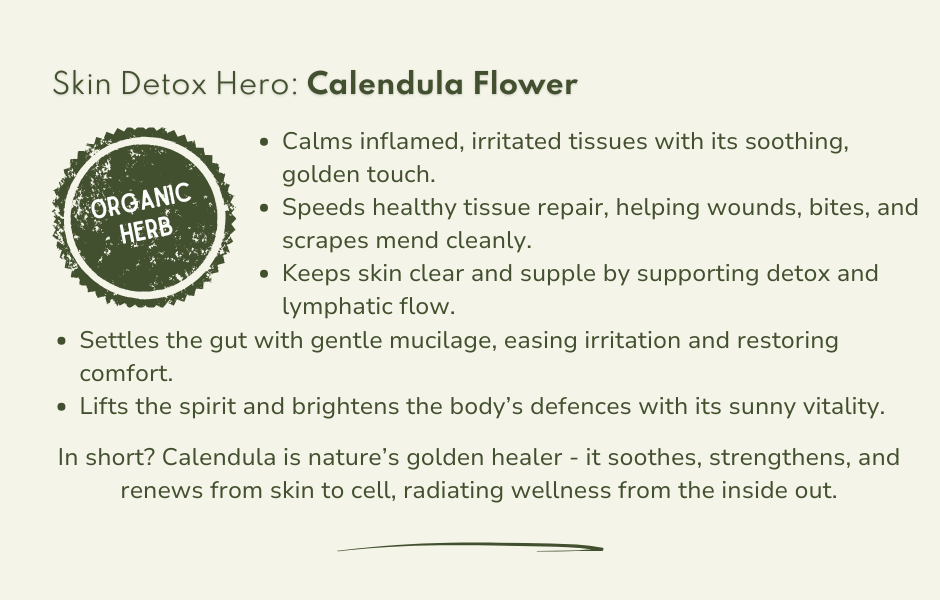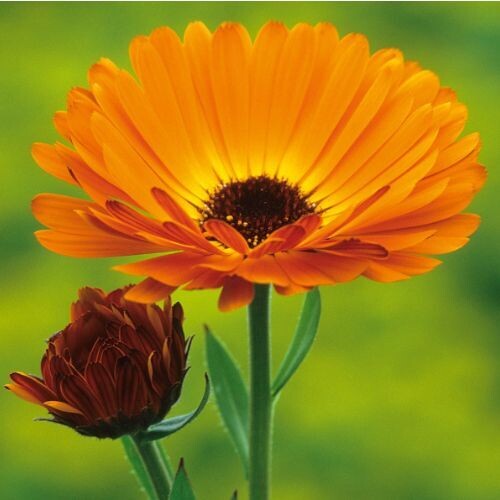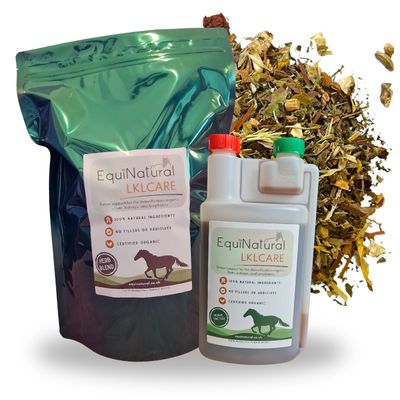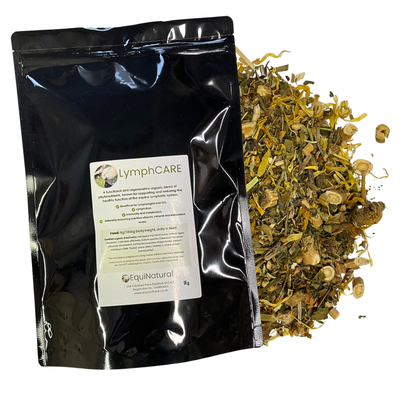CALENDULA (Calendula officinalis) *Skin-healing, tissue-soothing, inflammation-calming gold
Benefits of Calendula for Horses
Calendula’s golden petals aren’t just pretty - they’re powerful! From soothing skin and supporting digestion to keeping the lymphatic system flowing, this sunny flower has been a trusted healer for centuries.
Both a protector and a restorer, calendula helps tissue knit cleanly, calms local inflammation, and encourages healthy drainage through the lymphatic system. A versatile herb for any blend focused on repair, detox, or calm vitality.
Please note this is a nutritional, functional horse food supplement and not veterinary medicine. See Dr Kellon's Horse Sense - 'Nutrition is not 'Alternative' Therapy.

Find Organic Calendula in the EquiNatural range
Where skin and lymphatic cleansing needs support, that's where you’ll also find Calendula in our equine supplement range: LymphTone (Calendula&Cleavers), LKLCARE , LymphCARE , OptimaCARE , & SwItchTonic. Composition & Feed Guide
💧Organic Calendula Tincture
Our human-grade, certified organic tinctures give you a ready-to-absorb potent source of phytonutrients at the highest-strength available, for immediate absorption straight into the bloodstream and to the body’s cells.
- Calendula officinalis (Marigold)
- Petals
- Cold Macerated 1:3 90%
- Organic Cultivated
~ Feed Guide - calendula tincture for horses
- 6ml/100kg bodyweight, daily in feed.
- Our tinctures come in a heat-sealed, twin-neck, child-resistant HDPE plastic dosing bottle, complete with dosing chamber. ♻️ HDPE is recyclable and low-impact - aligned with our sustainability ethos.
🌿Organic Dried Calendula Flower
Grown, harvested and dried without the use of agri-chemicals, non-irradiated and GMO free - see our Quality page for Quality Management & Certification Documents.
- Calendula officinalis (Marigold)
- Flowers
- Organic Cultivated
- Origin Egypt
~ Feed Guide - dried calendula flowers for horses
- 5g/100kg bodyweight per day, i.e. 25g for a 500kg horse.
- Want a scoop? You can add a scoop to your basket during checkout.
- ♻️Supplied in a 100% fully recylable, resealable, food-grade foil pouch for freshness.
Functional Nutritional Value
Constituents: Flavonoids (including rutin and narcissin), triterpenoid saponins (calendulosides A-D), volatile oil, carotenoids, phenolic acids (chlorogenic acid and coumaric acid), resin, sterols, tannin, amino acids, mucilage, and polysaccharides.
Footnotes
- Laboratory tested for identification and compliance to the British and European Pharmacopoeia standards.
- Human grade.
- Please be aware that if you're purchasing our dried botanicals for human use, our dried range is cut to appropriate sizes for feeding to horses.
- ♻️ Eco Note: Our packaging is recyclable and refillable.
- 🧊 Storage Tip: Keep cool and dry.
Clinical Considerations
Contraindications:
- Pregnancy: Avoid during pregnancy as Calendula has been traditionally classed as an emmenagogue and mild uterine stimulant.
- Wounds: If using topically, ensure wounds are fully cleansed before application - Calendula promotes rapid tissue repair, which may otherwise trap debris or infection.
Calendula in History & Tradition
Calendula’s cheerful golden blooms have been lifting spirits for centuries. Shakespeare himself was charmed, writing in The Winter’s Tale :
“The marigold, that goes to bed wi’ the sun
And with him rises weeping.”
Known to most of us as marigold , calendula first started popping up in European writings around the 12th century. Herbalist Hildegard von Bingen praised its healing qualities way back then, calling it “cold and moist,” and noting its use against poisons in both humans and animals.
From the Middle Ages right through to the 17th century, just looking at calendula was said to lift your mood and “draw away evil humours.” Herbalist John Parkinson wrote in 1629 that it was used in food, syrups and sweet conserves as a “comforter of the heart and spirits.” Today’s research hints that calendula may indeed have mood-boosting properties - proof that our ancestors were on to something!
But calendula is most famous for its remarkable healing touch on the outside and inside. Samuel Hahnemann, the father of homeopathy, included calendula in his remedies for cuts, sores and burns. During the American Civil War and even World War I, it was used on the battlefield when other supplies ran out.
Why do so many turn to calendula?
It’s a true multitasker. Its natural anti-inflammatory, antibacterial, antiviral and antifungal powers make it a go-to for:
- soothing cuts, grazes, bites and burns
- calming rashes, sunburn and stubborn wounds
- supporting the healing of fungal infections like thrush
- easing the discomfort of haemorrhoids and varicose veins
And its gifts don’t stop at the skin. Calendula helps the lymphatic system “tidy up,” moving lymph fluid, clearing toxins, and keeping immunity strong. Herbalists often pair it with cleavers for even greater lymphatic support - brilliant for horses as well as humans.
This sunny flower also supports the digestive system. Its gentle bitter edge and mucilage content make it wonderfully soothing for irritated tissues - think reflux, ulcers, IBS or even leaky gut.
In folk traditions, calendula has been used to lower fevers, “warm” the body, and encourage a healthy sweat to help fight off infections. And because it’s edible, you’ll still find petals sprinkled in salads or soups, just as they were in olden times (they even used to colour cheese and substitute saffron!).
Calendula is, quite simply, one of nature’s hardest-working healers - a sunny, golden ally for skin, gut, immunity, and spirit.
Copyright Notice
© EquiNatural 2025. All content is original work protected under copyright, and may not be re-published, duplicated, or rewritten for commercial use without permission.







